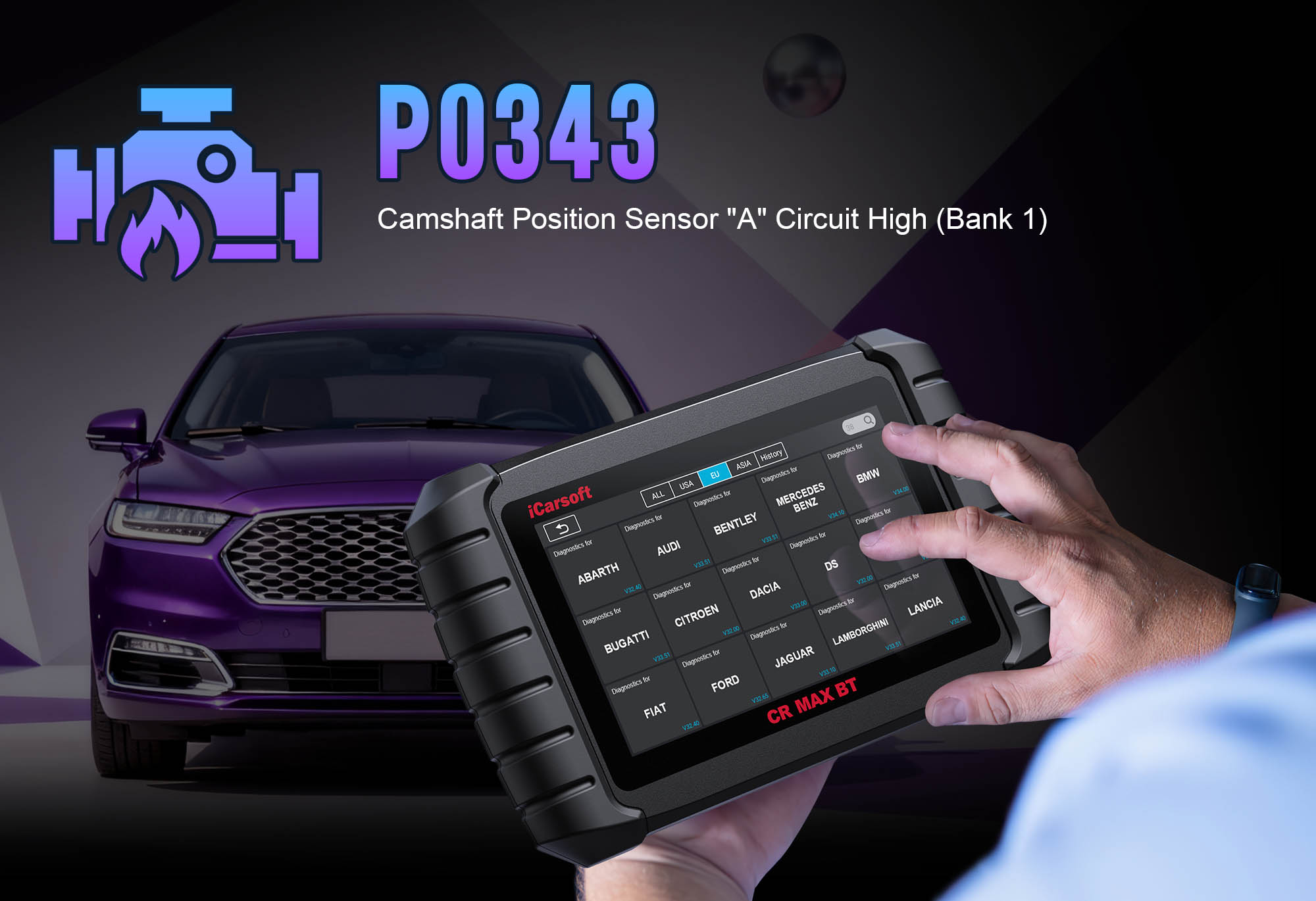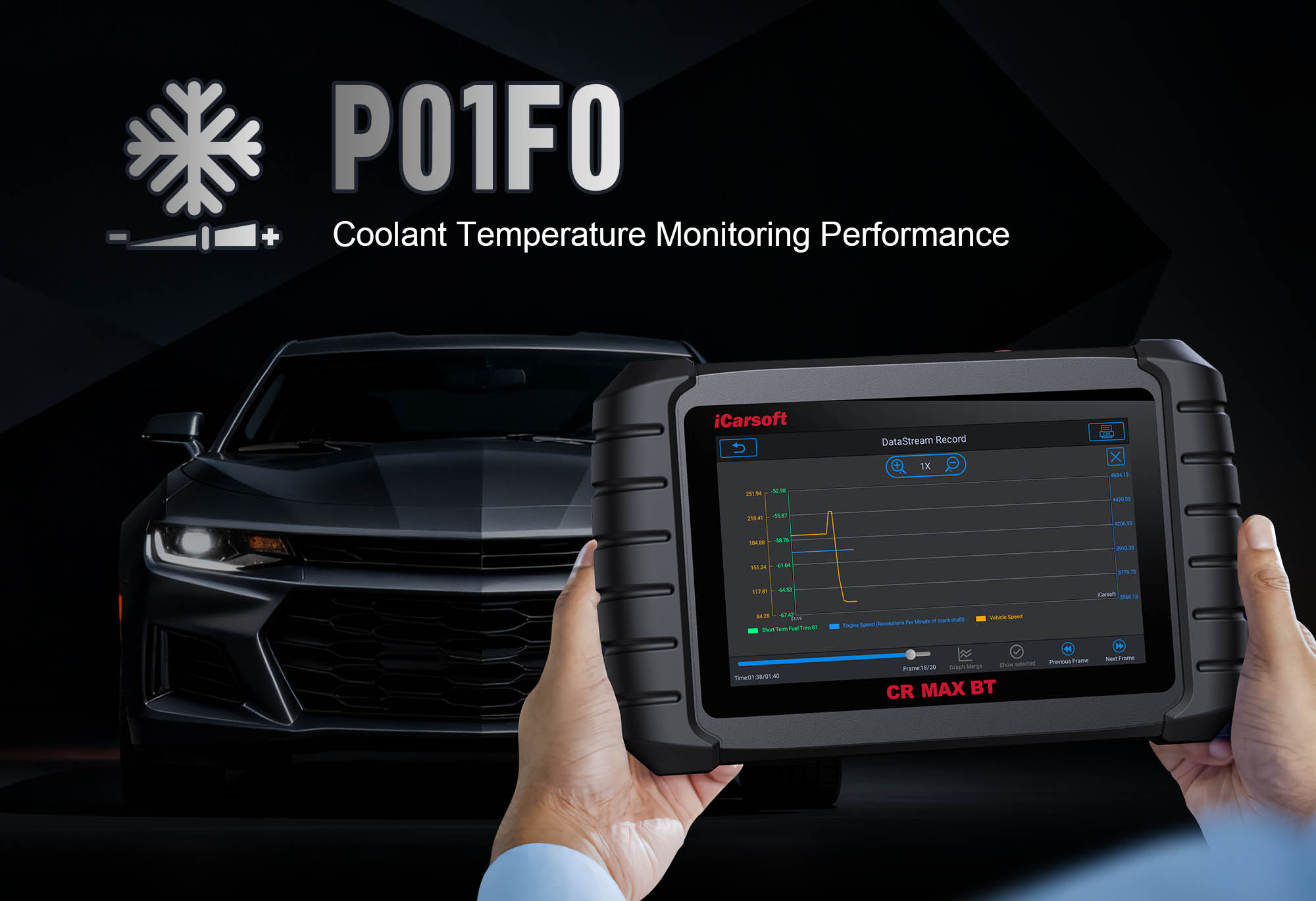Understand & Fix P2237: Oxygen Sensor Circuit High Current (Bank 1, Sensor 1) with iCarsoft CR Pro S
If your vehicle’s check engine light illuminates, you notice increased exhaust emissions, or it fails an emissions test, a diagnostic scan will likely return P2237. This critical OBD-II code stands for "Oxygen Sensor Circuit High Current (Bank 1, Sensor 1)"—targeting the primary oxygen (O2) sensor that monitors the air-fuel mixture in the engine’s exhaust. The Engine Control Module (ECM) relies on this sensor’s data to adjust fuel injection; high current in the circuit indicates a malfunction disrupting combustion efficiency and increasing pollution.
Generic scanners only label this an "O2 sensor error" but can’t distinguish between a faulty sensor, damaged wiring, or failing ECM driver. This leads to unnecessary part replacements. The iCarsoft CR Pro S cuts through guesswork with OE-level O2 sensor diagnostics, live current tracking, and brand-specific data—ideal for fixing P2237 in Toyota Corolla, Ford Focus, Honda Civic, and more. Below, we break down causes, symptoms, step-by-step solutions, and 8 FAQs.
What Is P2237?
P2237 refers to high current in the Bank 1, Sensor 1 oxygen sensor circuit. "Bank 1" is the cylinder bank with the number 1 cylinder; "Sensor 1" is the upstream O2 sensor (before the catalytic converter) that monitors exhaust oxygen content. The O2 sensor uses a heating element to reach operating temperature quickly—high current occurs when the ECM detects excessive electrical flow to this element or the sensor’s signal circuit, indicating a short, faulty sensor, or wiring issue.
This code is prevalent in vehicles with aging O2 sensors or heat/exhaust-damaged wiring, such as Toyota Corolla P2237 upstream sensor or Ford Focus O2 sensor circuit short. It’s also common in luxury models like BMW 3 Series, where precise emissions control is mandatory.
Key Symptoms of P2237
-
Illuminated Check Engine Light: Primary warning sign, often paired with P0135 (O2 sensor heater circuit malfunction) or P0171 (system too lean).
-
Increased Exhaust Emissions: Rotten egg smell or black smoke from the tailpipe—common in Honda Civic P2237 emissions excess.
-
Poor Fuel Economy: ECM’s incorrect fuel adjustments lead to 10–15% higher consumption.
-
Emissions Test Failure: Non-compliant exhaust levels cause smog test failure—critical for California P2237 smog check fail scenarios.
-
Rough Idling & Misfires: Imbalanced air-fuel mixture causes engine shaking at low speeds.
-
Reduced Acceleration: Hesitation or lag when pressing the gas pedal, as the ECM struggles to optimize fueling.
Common Causes of P2237
|
Cause
|
Description
|
|
Faulty Upstream O2 Sensor
|
Damaged heating element or internal short causes excessive current draw—common in high-mileage P2237 sensor failure.
|
|
Wiring/Connector Issues
|
Frayed wires, corroded terminals, or short circuit between sensor and ECM—prevalent in Chevrolet Silverado P2237 wiring damage (exposed to exhaust heat).
|
|
ECM Driver Failure
|
ECM’s internal circuit controlling O2 sensor current fails, sending incorrect signals.
|
|
Catalytic Converter Damage
|
Failing converter contaminates the O2 sensor, leading to false high-current readings.
|
|
Exhaust Leaks
|
Leaks before the upstream sensor introduce extra oxygen, misleading the sensor and triggering ECM current adjustments.
|
Why iCarsoft CR Pro S Excels at Diagnosing P2237
Resolving P2237 requires precise electrical testing to avoid misdiagnosis. The CR Pro S stands out with O2 sensor circuit-tailored features:
Brand-Specific Code Decoding
Translates P2237 into model-specific insights (e.g., "Toyota Corolla: Check Heater Element" vs. "Ford Focus: O2 Wiring Short to Ground").
Live Current/Voltage Tracking
Monitors real-time current draw (0.5–1.0A normal) and sensor voltage (0.1V–0.9V), highlighting P2237-triggering spikes.
Circuit Continuity & Short Tests
Built-in multimeter detects shorts, opens, and voltage drops—pinpoints corroded O2 connector P2237 issues fast.
O2 Sensor Heater Test
Sends controlled current to the heating element to verify functionality—distinguishes heater faults from wiring issues.
Global Vehicle Coverage
Supports 50+ P2237-prone brands: Toyota, Ford, Honda, Chevrolet, BMW, Volkswagen, and more.
Component Location Tool
Pinpoints Bank 1, Sensor 1 position (near exhaust manifold)—saves time on sensor access and inspection.
Step-by-Step: Diagnose & Fix P2237 with iCarsoft CR Pro S
-
Confirm P2237 & Gather Vehicle-Specific Data
Plug the CR Pro S into the OBD-II port, power on, and select AutoVIN Identify to detect make/model/cylinder bank configuration.
Navigate to Engine > Fault Codes > Read Codes to confirm P2237. Tap Code Details for insights (e.g., "Honda Civic: Current Draw 2.0A (Over Max); Check Wiring/Sensor").
-
Analyze Live O2 Sensor Data
Go to Engine > Live Data > Emissions to monitor three key metrics:
1. O2 Sensor Current: Stabilizes at 0.5–1.0A—fixed reading above 1.0A confirms P2237.
2. O2 Sensor Voltage: Fluctuates 0.1V (lean)–0.9V (rich)—flatline = faulty sensor/short.
3. Heater Circuit Voltage: Matches battery voltage (12V) when cold—low voltage = wiring issues.
-
Test the O2 Sensor & Wiring
1. Locate Bank 1, Sensor 1 via Component Location tool. Disconnect the connector, use Resistance Test on the heater element (OEM specs 10–40 ohms)—open/0 ohms = faulty sensor.
2. Wiring Test: Use Continuity Test for shorts/breaks between sensor and ECM. Clean corroded connectors with contact cleaner.
-
Inspect Exhaust & Update ECM
1. Exhaust Leak Check: Inspect for leaks before the upstream sensor (use smoke test if available)—leaks trigger false P2237.
2. Catalytic Converter Check: Use CR Pro S’s catalytic converter efficiency test to rule out contamination.
3. ECM Update/Reset: For BMW 3 Series P2237 ECM glitch, update software via Wi-Fi or reset ECM to clear adaptive data.
-
Replace Faulty Components & Validate the Fix
- Install new OEM/quality aftermarket O2 sensor if faulty. Repair/replace damaged wiring.
- Use Engine > Fault Codes > Clear Codes to erase P2237.
- Test drive 50–100 miles, monitor live O2 data—stable current/voltage = issue resolved.
FAQs: P2237 Troubleshooting (Low-Competition Long-Tail Keywords)
Can I drive with P2237, or will it damage my engine?
Short trips are safe, but prolonged driving risks catalytic converter damage (from unburned fuel). For Toyota Corolla P2237 daily driver, diagnose with the CR Pro S immediately to avoid costly repairs.
How much does it cost to fix P2237?
New upstream O2 sensor = $80–$200 (parts + labor). Wiring repairs = $100–$180. The CR Pro S saves $100–$250 on diagnostics and avoids misreplacing the $500+ ECM. DIY P2237 repair Ford Focus cuts labor costs by 50%.
Why does P2237 keep returning after I replace the O2 sensor?
Root cause is unresolved—common culprits: hidden wiring short P2237 or failing ECM driver. Use the CR Pro S’s History Log and live current data to pinpoint the issue.
Is P2237 the same as P0135 (O2 Sensor Heater Circuit Malfunction)?
No—P2237 = high current in the circuit; P0135 = heater circuit open/short. The CR Pro S’s code details clarify the difference, with a heater test to confirm the fault.
Can a bad catalytic converter cause P2237?
Yes—contaminants from a failing converter damage the O2 sensor’s heating element. For Chevrolet Silverado P2237 converter link, use the CR Pro S’s catalytic converter efficiency test to check health.
How do I test an O2 sensor’s heater element with the iCarsoft CR Pro S?
Use the Resistance Test function: Disconnect the sensor, probe heater terminals, and compare to OEM specs. For Honda Civic P2237 heater test, the CR Pro S displays pass/fail based on your vehicle’s parameters.
Will P2237 affect my vehicle’s warranty?
Unrepaired emissions-related faults may void warranty coverage. Fix P2237 promptly with the CR Pro S to maintain validity, especially for newer Toyota P2237 warranty claim scenarios.
How do I prevent P2237 from happening again?
Use high-quality fuel to reduce sensor contamination, and inspect O2 wiring during routine maintenance. For off-road P2237 prevention (Jeep Wrangler), install a wiring heat shield. Run monthly O2 sensor checks with the CR Pro S.
Conclusion
P2237’s high current fault disrupts emissions compliance and fuel efficiency, but the iCarsoft CR Pro S simplifies diagnosis with live current tracking, heater testing, and brand-specific data. It ensures you fix the root cause—whether it’s a faulty O2 sensor, wiring short, or ECM glitch—instead of wasting money on unnecessary parts.
With a 5-inch touchscreen, lifetime free software updates, and support for 50+ brands, the CR Pro S is a must-have for DIYers and mechanics. Resolve P2237, pass emissions tests, and restore your vehicle’s performance—all with one professional-grade diagnostic scanner.





